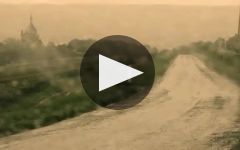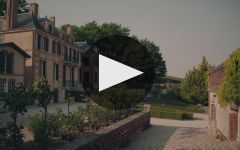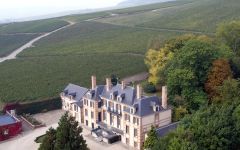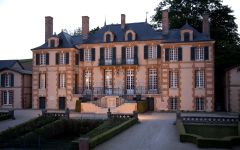Taittinger Comtes de Champagne Blanc de Blancs 2007
-
Tasting
Panel -
James
Suckling -
Wine
Enthusiast -
Robert
Parker -
Wine &
Spirits -
Wine
Spectator - Decanter



Product Details
Your Rating
Somm Note
Winemaker Notes
Professional Ratings
-
Tasting Panel
A stunningly beautiful wine with seductive aromas and precise, refined flavors; bright, crisp, and exceptionally long, it shows purity and finesse.
-
James Suckling
This is a step up from the linear and fresh 2006. It shows subtle depth and power with a dense block of vivid fruit that's highlighted with lemon zest, green apples and hints of white peaches. Just the right amount of praline and nuts on the nose. Fine and tight bead give the Champagne a luxurious mouthfeel. One for now or the cellar.
-
Wine Enthusiast
Always one of the great Champagnes, this comes from a year that is generally regarded as good but not great. And yet, with this Champagne is magnificent. The wine has some good bottle age, hinting at toast while also keeping the tight, mineral edge of a great wine from the Côte des Blancs. Drink from 2020.
-
Robert Parker's Wine Advocate
The 2007 Brut Blanc de Blancs Comtes de Champagne continues to show very well, and it hasn't evolved appreciably since I last tasted it a few months ago. Revealing a pretty bouquet of lemon oil, lily pollen, dried white flowers, blanched almonds and crushed chalk, it's medium to full-bodied, chiseled and tensile, with excellent depth at the core, racy acids and a pure, precise and notably chalky finish. Tight-knit without being austere, it's a very classically balanced middleweight Comtes that has a long future ahead of it.
-
Wine & Spirits
An intriguing 2007, this is 100 percent chardonnay from grand cru sites in the Côte des Blancs, a small portion aged in oak barrels, the blend then aged ten years on the lees. Over that time, it developed mature tones of bottle age that add to its vibrant freshness. It’s a grand wine with floral notes of beeswax and nutty tones of yeast autolysis.
-
Wine Spectator
Elegant and toasty, with a firm backbone of acidity structuring the brioche, lemon zest, poached apricot and spun honey flavors as they ride the lacy bead. Grated ginger and chalk notes detail the lively finish.
-
Decanter
Sunny, floral, citrusy expression, with elegant creamy white fruit on lightly textured and finely drawn palate: true Blanc de Blancs finesse.
Other Vintages
2012-
James
Suckling -
Wine
Spectator -
Jeb
Dunnuck -
Robert
Parker
-
James
Suckling - Decanter
-
Robert
Parker -
Wine
Spectator -
Jeb
Dunnuck
-
James
Suckling -
Robert
Parker -
Wine
Enthusiast -
Wine
Spectator - Decanter
-
Robert
Parker -
James
Suckling -
Wine
Enthusiast -
Wilfred
Wong -
Wine
Spectator -
Connoisseurs'
Guide
- Decanter
-
Wine
Enthusiast -
Wine
Spectator -
Robert
Parker -
Wine &
Spirits
-
Robert
Parker -
Wine
Spectator
-
James
Suckling -
Robert
Parker -
Wine
Spectator
-
Robert
Parker -
Wine
Spectator -
Wine &
Spirits
-
Wine
Enthusiast -
Robert
Parker -
Wine
Spectator
-
Wine
Enthusiast -
Wine
Spectator -
Robert
Parker -
Wine &
Spirits
-
Robert
Parker -
Wine
Enthusiast -
Wine
Spectator -
Wine &
Spirits
-
Robert
Parker -
Wine
Spectator








Champagne Taittinger was established in 1931 by Pierre Taittinger on the foundations of Forest-Forneaux, itself established in 1734 and the third-oldest wine producing house of Champagne. Taittinger is today proprietor of approximately 600 acres of vines among which are included parcels in the one hundred - percent rated villages of Cramant and Avize in the Cote des Blancs; and Bouzy, Mailly, Ambonnay and Verzenay in the Montagne de Reims. The Taittinger Estate is one of the three most extensive in the Champagne district, and the firm's major holdings in Chardonnay vineyards are the physical expression of the Taittinger philosophy and style.

Representing the topmost expression of a Champagne house, a vintage Champagne is one made from the produce of a single, superior harvest year. Vintage Champagnes account for a mere 5% of total Champagne production and are produced about three times in a decade. Champagne is typically made as a blend of multiple years in order to preserve the house style; these will have non-vintage, or simply, NV on the label. The term, "vintage," as it applies to all wine, simply means a single harvest year.

Associated with luxury, celebration, and romance, the region, Champagne, is home to the world’s most prized sparkling wine. In order to bear the label, ‘Champagne’, a sparkling wine must originate from this northeastern region of France—called Champagne—and adhere to strict quality standards. Made up of the three towns Reims, Épernay, and Aÿ, it was here that the traditional method of sparkling wine production was both invented and perfected, birthing a winemaking technique as well as a flavor profile that is now emulated worldwide.
Well-drained, limestone and chalky soil defines much of the region, which lend a mineral component to its wines. Champagne’s cold, continental climate promotes ample acidity in its grapes but weather differences from year to year can create significant variation between vintages. While vintage Champagnes are produced in exceptional years, non-vintage cuvées are produced annually from a blend of several years in order to produce Champagnes that maintain a consistent house style.
With nearly negligible exceptions, . These can be blended together or bottled as individual varietal Champagnes, depending on the final style of wine desired. Chardonnay, the only white variety, contributes freshness, elegance, lively acidity and notes of citrus, orchard fruit and white flowers. Pinot Noir and its relative Pinot Meunier, provide the backbone to many blends, adding structure, body and supple red fruit flavors. Wines with a large proportion of Pinot Meunier will be ready to drink earlier, while Pinot Noir contributes to longevity. Whether it is white or rosé, most Champagne is made from a blend of red and white grapes—and uniquely, rosé is often produce by blending together red and white wine. A Champagne made exclusively from Chardonnay will be labeled as ‘blanc de blancs,’ while ones comprised of only red grapes are called ‘blanc de noirs.’
